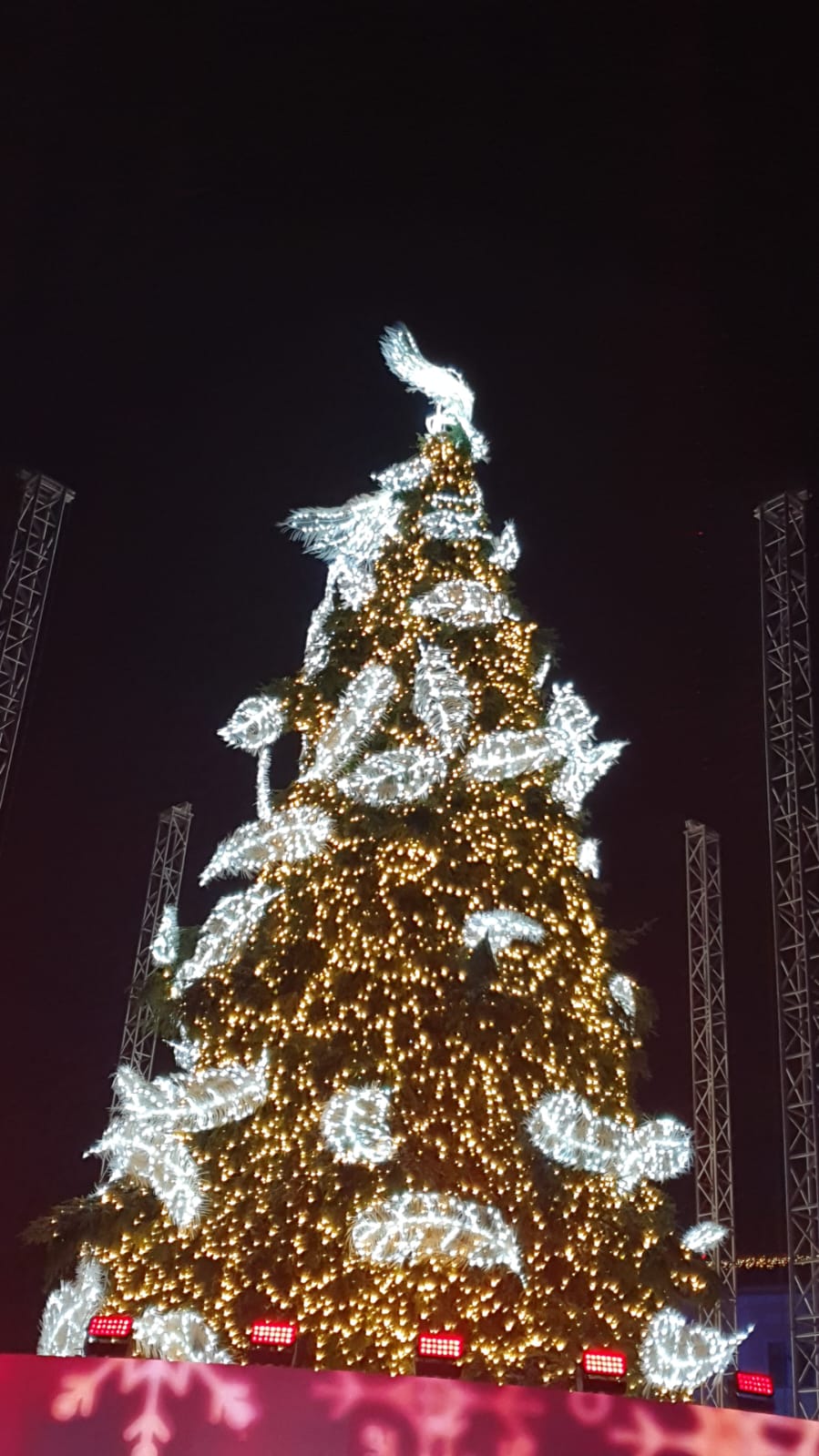The custom of embellishing Christmas trees stands as a timeless and revered facet of the holiday season, casting a magical spell of joy and festive exuberance that resonates in homes across the globe. As we explore the historical tapestry woven with the adornment of trees through the ages, we embark on a captivating journey that transcends centuries and traverses the rich diversity of cultures worldwide. The evolution of bedecking trees with an array of ornaments and twinkling lights unfolds as a mesmerizing narrative, shaping and reshaping itself to become an integral and heartwarming tradition intrinsically linked with the essence of Christmas celebrations.
Denmark stands as a prominent player in the global Christmas tree market, recognized for its extensive cultivation and export of these festive evergreens. Renowned for their impeccable quality, Danish Christmas tree farms, particularly those producing Nordmann fir and Norway spruce, contribute significantly to meeting the holiday demand across Europe. The nation’s commitment to cultivating top-tier trees has earned it a reputation as a leading supplier of Christmas trees, making a meaningful impact on homes and festive celebrations throughout the continent. While Denmark holds a noteworthy position, it’s essential to acknowledge the collective efforts of other nations like the United States, Canada, and Germany, each playing a vital role in the seasonal tradition of adorning homes with beautifully decorated Christmas trees.
Christmas Trees Ancient Roots
The tradition of adorning trees for festive occasions traces its origins back to ancient times, well before the advent of the Christian era. This venerable practice, steeped in rich history, spans diverse cultures that recognized the symbolic significance of evergreen trees, which retained their verdant foliage throughout the year. The Romans, with their penchant for elaborate celebrations, integrated evergreen boughs into their festivities as emblems of life’s continuity and the cycle of renewal. Meanwhile, the Egyptians, known for their reverence for nature and cyclical concepts of life and death, incorporated evergreens into ceremonies, appreciating their resilience as a representation of eternal life. The Druids, an ancient Celtic priesthood, also embraced evergreen branches in their rituals, attributing spiritual significance to these trees as potent symbols of endurance and the enduring spirit of life. These practices collectively laid the foundation for the enduring symbolism of evergreens in seasonal celebrations, a tradition that has transcended centuries and continues to resonate in contemporary holiday festivities.
Medieval Traditions
In the annals of history during the Middle Ages, a captivating tradition known as the “Paradise Tree” found its roots in medieval German mystery plays. These theatrical productions intricately portrayed biblical narratives, with a particular focus on the timeless tale of Adam and Eve. Amidst the dramatic unfolding of this foundational story, a notable custom emerged, featuring a prominently adorned tree, frequently a majestic fir tree. The chosen embellishments for this symbolic tree were apples, each meticulously arranged to represent the forbidden fruit at the heart of the biblical narrative. As time wove its tapestry through the ages, this theatrical representation gradually transformed into a cherished custom, extending beyond the realm of the stage and finding a home in the hearts of people who began to decorate trees with apples and other delectable edibles during the festive season. This evolution marked a crucial turning point in the history of Christmas tree decorations, contributing to the diverse and vibrant tapestry of traditions that define our contemporary holiday celebrations.
The First Christmas Trees
Venturing into the roots of the First Christmas Trees, we find ourselves in 16th-century Germany, a pivotal period in the evolution of the tradition as we recognize it today. Historical accounts credit devout Christians with introducing the practice of bringing decorated trees into their homes during this era, marking the genesis of a custom that would unfold across the centuries. The charm of these early Christmas trees lay in their adornments, a delightful array of fruits, nuts, and candles carefully arranged to symbolize the stars. This symbolic embellishment not only reflected the religious significance of the season but also added a luminous and festive touch to the homes that embraced this newfound tradition. Over time, the practice gained widespread popularity, transcending its origins in Germany and laying the foundation for the global tradition of adorning Christmas trees with a symphony of ornaments and lights
Queen Victoria and Prince Albert Christmas Trees
The global ascent of the Christmas tree tradition reached new heights during the 19th century, propelled by the influential duo of Queen Victoria and her German-born husband, Prince Albert. Their pivotal role in popularizing the adorned Christmas tree became evident in 1846 when a captivating drawing depicting the royal family gathered around a festively decorated tree was published. This enchanting illustration not only captured the public’s imagination but also marked a turning point in the widespread adoption of the tradition. The royal Christmas tree, adorned with radiant candles, exquisite ornaments, and petite gifts, became an iconic symbol of festive joy and familial celebration. Queen Victoria and Prince Albert’s endorsement of this charming custom resonated far beyond the confines of their palace, catalyzing a global embrace of the Christmas tree as a cherished centerpiece of holiday festivities.
Ornaments and Electric Lights
As the 19th century unfolded, the art of decorating Christmas trees underwent a transformative journey, marking a shift towards increasingly elaborate and diverse ornamentation. Handmade ornaments emerged as the vogue, showcasing the craftsmanship of artisans who meticulously fashioned decorations from a variety of materials, including delicate glass, resilient metal, and intricate paper. These handcrafted embellishments not only added a personal touch to each tree but also reflected the creativity and artistry of the individuals decorating their homes.
The late 19th century heralded a groundbreaking development with the invention of electric lights, a revolutionary addition to the Christmas tree decorating repertoire. This innovation not only replaced the traditional use of candles but also elevated the safety and splendor of the festive display. Electric lights enabled trees to shimmer and glow with a mesmerizing radiance, transforming the holiday ambiance into a dazzling spectacle of lights.
Moreover, the types of ornaments and lights used on Christmas trees vary widely across cultures and personal preferences. Ornaments come in an assortment of shapes and styles, ranging from classic baubles and figurines to more contemporary and personalized designs. Lights, too, have evolved, with options ranging from traditional incandescent lights to energy-efficient LED varieties, offering an extensive palette for individuals to create their unique festive displays.

In the modern era, countries around the world contribute to the production of Christmas decorations, with unique styles and cultural influences shaping the ornaments and lights available. While specific data may vary, traditionally, countries like China have been major producers of Christmas decorations, supplying a significant portion of the global market with an extensive array of ornaments, lights, and festive accessories. As the holiday season approaches, the availability of diverse decorations continues to enrich the global tradition of adorning Christmas trees, reflecting the collective creativity and cultural diversity that defines this cherished festive custom.
Commercialization and Pop Culture
Entering the 20th century, Christmas decorations underwent a notable transformation as commercialization took center stage. Mass production became the norm, ushering in an era of widespread availability of ornaments, lights, and tinsel. This shift not only democratized access to festive decorations but also allowed for a broader range of styles and designs to enter the market.
The Christmas tree’s popularity surged during this period, solidifying its status as a central symbol of the holiday season in countless households around the world. The tradition of adorning trees became ingrained in the cultural fabric, transcending geographic boundaries and becoming a unifying aspect of global holiday celebrations.
The influence of popular culture played a pivotal role in amplifying the Christmas tree tradition. Iconic images of beautifully decorated trees began to permeate movies, television shows, and advertisements, shaping public perceptions of the ideal festive display. These visual representations not only inspired creativity but also fueled the desire for diverse and eye-catching decorations, further propelling the commercialization of Christmas decor.
As the 20th century progressed, the market saw an influx of innovative and thematic ornaments, lights with varying hues and effects, and an array of tinsel options, catering to the evolving tastes and preferences of consumers. The widespread availability of these decorations not only enhanced the visual spectacle of individual Christmas trees but also contributed to the broader cultural tapestry of the festive season. In this era, the Christmas tree transformed into more than just a symbol of holiday cheer; it became a canvas for personal expression and a reflection of the changing dynamics in consumer culture and popular aesthetics.
Christmas Trees Modern Trends
In contemporary times, the tradition of decorating Christmas trees has blossomed into a dynamic and personal expression of holiday joy. The once-simple act of adorning trees has evolved into an art form, with individuals infusing their unique tastes and styles into the festive displays. Christmas trees today serve as captivating canvases for creativity, adorned with a rich tapestry of ornaments, lights, and garlands, each contributing to the overall aesthetic in a distinctive way.
The diversity of themes employed in tree decoration has become a hallmark of modern holiday celebrations. No longer confined to conventional red and green, trees now showcase a kaleidoscope of colors and styles, catering to an array of personal preferences. Traditional and classic themes evoke a sense of nostalgia, while modern and eclectic arrangements push the boundaries of festive expression. From themed trees that tell a story to avant-garde displays that embrace innovative materials and designs, the possibilities are as varied as the individuals who partake in this cherished tradition.
As we embrace the 21st century, the Christmas tree stands not only as a symbol of seasonal merriment but also as a reflection of the multicultural and multifaceted nature of our global society. Each ornament hung, every light strung, and all the intricate details woven into the display contribute to a mosaic of holiday cheer that resonates with the diverse traditions and celebrations observed around the world. The modern Christmas tree is more than a decoration; it is a testament to the ever-evolving nature of festive expression and the enduring spirit of joy that unites people across cultures during the holiday season.
The history of decorating Christmas trees is a rich tapestry woven with cultural, religious, and artistic threads. From ancient symbolism to the grandeur of modern displays, the tradition has evolved over centuries, bringing warmth and festivity to homes across the globe. As we continue to celebrate this timeless custom, the twinkling lights and festive ornaments serve as a reminder of the joy and togetherness that define the holiday season.






